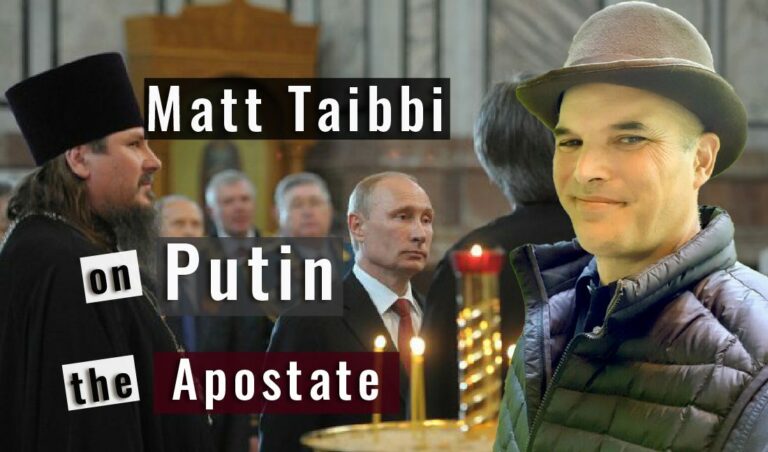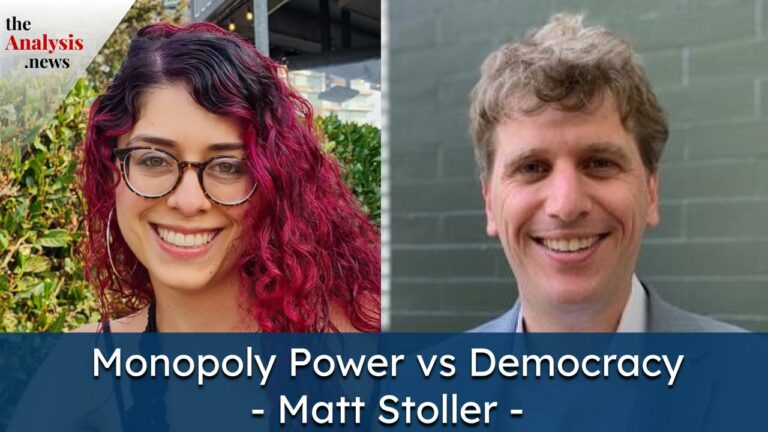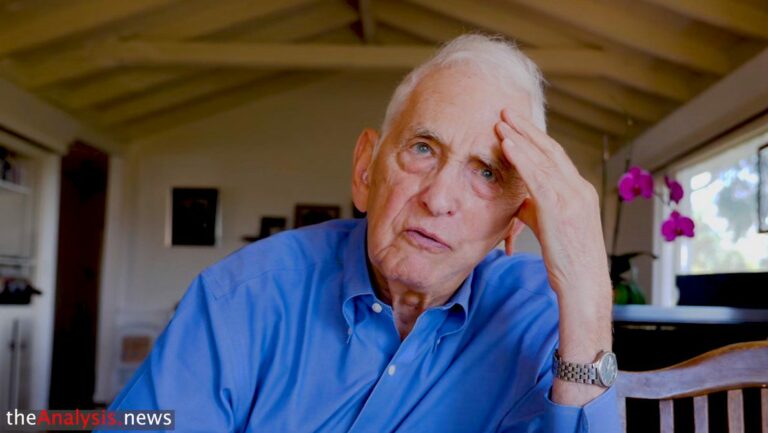Military-Industrial Congressional Frauds – Lester Earnest on RAI Pt 2/5
Corporations bribed politicians—it’s legal, it’s called campaign contributions—and they funded projects the Defense Department contracted out, giving the crooks a lot of money; that’s still going strong today – says Lester Earnest, founder of the AI Lab at Stanford. This is an episode of Reality Asserts Itself, produced December 26, 2018.
STORY TRANSCRIPT
PAUL JAY: Welcome back to Reality Asserts Itself. I’m Paul Jay on The Real News Network. And we are back with Lester Earnest, one of the creators of artificial intelligence, or machine language, as he would prefer to call it. Thanks again for joining us.
LESTER EARNEST: My pleasure.
PAUL JAY: So up until now, you were working at MIT. You were then creating this great big fraud of an anti—a missile defense system, or a defense system that’s supposed to track with radar bombers that are coming in, Russian bombers that are supposed to attack. Except the whole system’s a crock, because it can’t work. That goes on for a long time. When do you [go to] Mitre, and what comes next?
LESTER EARNEST: Well, I went into Mitre in 1958, along with my other colleagues. We were temporarily without housing. I ended up at an abandoned missile site, which became my office. But eventually, they built new buildings for this corporation.
PAUL JAY: Which you just said was a very profitable nonprofit.
LESTER EARNEST: Correct.
PAUL JAY: Who shared the booty of the profit? Of the nonprofit? Everyone working there, I guess.
LESTER EARNEST: Well, the management. And there was probably some bribery going on, although I have no direct knowledge of that. Because they were, in effect, supporting a whole series of fraudulent … what I call military-industrial congressional frauds.
PAUL JAY: This is part of a theme, the enormous profit out of the hysteria created by the Cold War.
LESTER EARNEST: Yes. And the way it worked was various corporations would bribe politicians—it’s legal, it’s called campaign contributions—and they would then fund these various projects that the Defense Department would then contract out, giving the crooks a lot of money. That’s still going strong today, 60 years later.
PAUL JAY: So this anti—this defense system goes on for 25 years, moves from MIT to Mitre. You continue working on this system, but also you say there’s some other stuff that goes on which is a similar fraud.
LESTER EARNEST: Yeah. Well, after I stepped aside from SAGE air defense, well, then I went to System 438L, which is the Air Force intelligence system that was supposed to computerize everything. The goal was not to improve everything, it was to computerize it. Those are not necessarily compatible. And the colonel who was in charge had a [sole authors] contract with IBM, and the people he was working with happened to be pretty incompetent. But they nevertheless built a multi-million dollar system for SAC headquarters; that is, the Strategic Air Command headquarters located near Omaha.
And this was supposed to replace the old military intelligence system. The military has a whole bunch of encrypted communication lines transmitting textual material that was originally just printed out on paper, and then the paper would be given to the intelligence crew who were on duty. They would use grease pencils to summarize the intelligence situation worldwide, and they would keep the paper in their filing cabinet. So they were pretty much up to date within a few minutes of everything that was coming in over these lines. However, IBM computerized it by having each piece of paper put into punch cards manually, and then those cards would be verified by another typist to make sure that every punch was correct. And then they would go through error checking of various sorts. And then they would be put online so that you could search for messages about a certain thing. But this process meant they were always three days out of date.
PAUL JAY: Because it took so long to make these cards.
LESTER EARNEST: Exactly. So that was a pretty useless system.
PAUL JAY: And just to be clear, Strategic Air Command, amongst other things, is the one that actually is planning a potential nuclear strike on the Soviet Union. The whole war plan is going through Strategic Air Command.
LESTER EARNEST: Exactly. I was taken aback that this was going on, so I sent some guys there to check on the number of inquiries that were coming in from the duty officer at any given time. And the answer was zero because it was a useless system. So then a person higher in command at SAC decreed that every duty officer—there were three per day—each one of them would ask at least two questions. So we later checked the logs, and the number of questions asked was exactly two times the number of duty officers.
PAUL JAY: Because the information was pointless.
LESTER EARNEST: Absolutely pointless.
PAUL JAY: But they get to prove to Congress, who’s funding all this thing, that something’s happening. So it’s another crock.
LESTER EARNEST: Another crock. Well, I figured out that there was a way to make an actually useful system by having the text coming in over the line going directly into a computer, which would store the message and index it by keywords so that you could then do a search by keywords. And you could start doing that the moment after the message arrived. And you would get all the messages, recent messages, that match those keywords.
PAUL JAY: This is the beginning of the first real search engine.
LESTER EARNEST: It was the first search engine. And I got some guys at the Mitre corporation to actually build it. I was planning to oversee it. But they decided that I knew so much they sent me up—then sent me off to CIA headquarters for another project. CIA had two large databases that they had been collecting for years that were-
PAUL JAY: What year are we in now?
LESTER EARNEST: That was in 1963.
PAUL JAY: Just before you go to the CIA, let me just ask you a question. You write that the whole idea of Kennedy sending men to the moon was another—just for show. There was no reason for it.
LESTER EARNEST: Yeah. Well, the original plan that NASA and others had was to send robots to the moon. And we could have done that for a tiny fraction of the cost of sending people there and getting them back. And the robots could have collected a lot more information than those humans ever did. So that was the original plan. And then the question arose, could humans on earth drive a robot on the moon in real-time?
And so one of the Caltech people came to Stanford as a graduate student and made that project his thesis, Ph.D. thesis. And what they did was put together a system with a four-wheeled vehicle rolling around on earth with a—two-second, was it? I forget the exact delay time, round-trip communication time to the moon. Something like two and a half seconds. And so then the question is could a person looking at a video that is half that old, and now give a command, a steering command, make it go to the right place and not crash? And he proved the answer was no. You would lose control quickly because when you twist nothing happens on the screen until a little while later. And then you see you’re going too far, and you go back the other way, you’re doing this—anyway, he proved that there was a problem.
But then another graduate student came along using the same vehicle and showed that if you had a little analog computer that kept track of the steering commands and predicted where the vehicle will be when a current twist has an effect, shows it as a bright dot on the screen, looking ahead, then you steer that bright dot.
PAUL JAY: The point here is this could have been done without sending people to the moon.
LESTER EARNEST: That would have worked. And it would have been much, much cheaper. But the political reality is sending people to there was political theater of the first order.
PAUL JAY: And the Russians had already sent Sputnik up, so they had to prove that the military-
LESTER EARNEST: Yeah. The Russians were, incidentally, planning to send robots, also. So instead we sent people who I viewed—astronauts were really actors in a political theater, and still are. They’re not doing science. They’re putting on a show. And that’s the way our government works.
PAUL JAY: In the next segment of our interview we’ll talk about how this big fraud helped create the conditions for the internet. Please join us for the continuation of Reality Asserts Itself with Lester Earnest on The Real News Network.
END
Podcast: Play in new window | Download






